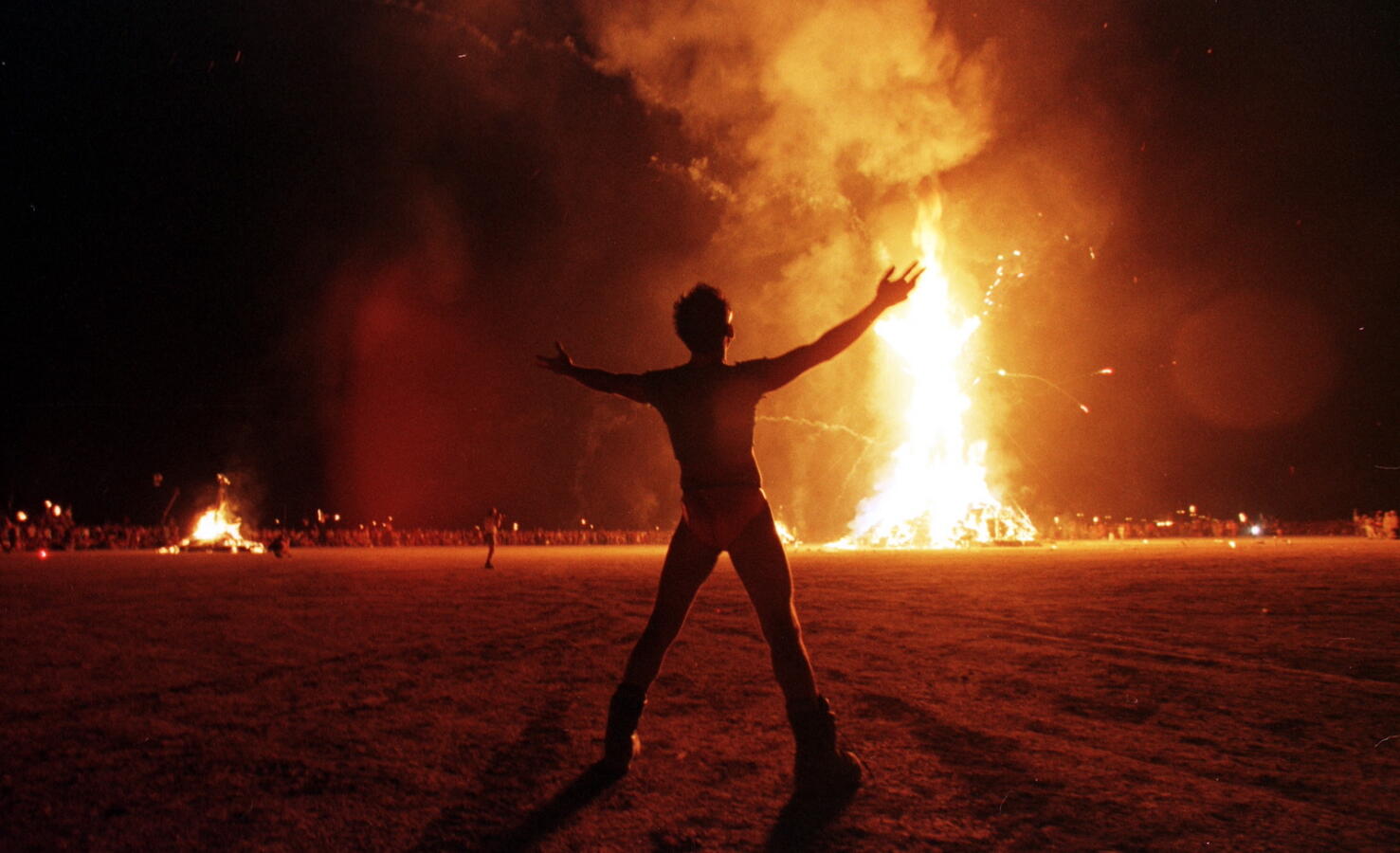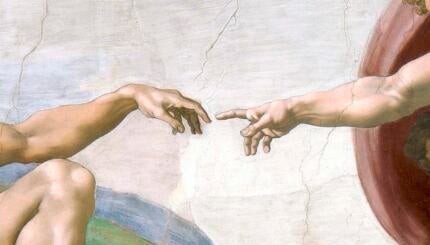Several years, and what seems like several lifetimes ago, the Jewish Telegraphic Agency dispatched me to the wilds of rural Nevada to cover the annual desert bacchanal known as Burning Man, a (theoretically) consumerism-free (and clothing optional) idyll of wild creative expression that is impossible to summarize in a sentence. Think Mad Max meets Big Tech meets Bohemian artistry meets drug/dance/hippie culture — all swathed in a greasy film of utopianism and sweat.
The culmination of this notorious week of debauchery is the burning of the eponymous “man,” a multistory sculpture of a human form that is burned to the ground on the festival’s final night. Tens of thousands of celebrants lose themselves in a kind of collective climax at this moment, dancing with abandon, twirling fire, getting high (literally and figuratively) and engaging in other quasi-ritualistic activities I’m at pains to describe. Witnessing this scene, I recall thinking to myself: Idolatry.
The term isn’t one with obvious modern referents and so had always remained something of an abstraction for me, despite its centrality to the Torah’s moral code. We have our contemporary “idols” — those figures of stage and screen and Spotify playlists that some worship like demigods. And we have our secular totems — wealth and fame and power and physical perfection that some of us pursue (or serve) with single-minded devotion. But idolatry in the biblical sense has all but vanished from the earth. (No, the Buddha statue in the corner of your yoga studio doesn’t count.) Nothing in my lived experience had ever before presented itself as a manifestation of this powerful biblical taboo.
The Torah’s most potent expression of idolatry is found in this week’s Torah portion. Newly redeemed by God through a series of supernatural feats and camped at the foot of Mount Sinai, the Israelites begin to lose hope that Moses will return from atop the mountain. So they take their gold and melt it down to create a statue of a calf to replace the God who had seemed to disappear on them. They offer sacrifices and dance, the latter understood by the commentaries to suggest acts of sexuality. Exodus 32:35 describes the people as being out of control, though the Hebrew word there (paruah) has a connotation of “uncovered.” The Israelites were laid bare, uninhibited, their impulses exposed and unrestrained.
With your help, My Jewish Learning can provide endless opportunities for learning, connection and discovery.
According to the ancient rabbis, the lust for this kind of thing supposedly evaporated a long time ago. The Talmud in Yoma recounts a fanciful story in which a lion cub representing the inclination for idol worship is thrown into a container of lead, thus eliminating it from the world. But the drive to build monuments, engage in uninhibited collective ritual, to dance and sacrifice before our creations — these remain alive and well in the human community, if largely at the cultural fringe. Few people today would create sculptured forms and worship them as if they were literally gods. But the trappings of this once prevalent ancient practice have not completely vanished.
And that’s perhaps understandable. The late Alan Lew, author of the beloved High Holiday guide This is Real and You Are Completely Unprepared, wrote that the purpose of ritual is to make the invisible visible. The Passover Seder, the waving of the lulav and etrog on Sukkot, the wearing of tzitzit — all these and much else aim to concretize that which is normally unseen, unremembered, unspoken. We need these things to bring the hidden into the light.
But God, we are told in the Torah, is not to be rendered in material form. And whatever the wisdom in that prohibition, it poses its problems. Life with an unseen God was a challenge for the ancient Israelites, as it is for many (most?) of us today. Like the ancients, we tend to believe in what we can see and feel and measure. To connect with and have faith in a force we can, at best, perceive only in the barest way, remains the core challenge of spiritual life.
And yet, this is the Torah’s demand, that we serve that which we cannot see — and refrain from worshiping that which we can.
The holiday that most emphasizes this hidden quality of God happens to be the next one on the calendar. The Book of Esther, which retells the Purim story, is the only one in the Hebrew Bible where God’s name is not mentioned. The very name of the heroine of the story, Esther, is understood as a reference to the statement in Deuteronomy that a day will come when God’s face will be concealed (haster aster panai) — because, not incidentally, of Israel’s worship of “other gods.” And Purim is also the holiday in which the rituals are the most freewheeling and orgiastic of any in Jewish life — drinking to excess, lavish feasting, masquerading and all kinds of uninhibited merrymaking.
Ritual makes the invisible visible. The holiday in which God’s presence is least manifest is also the one in which our inhibitions are most relaxed, our observance most primal, our physicality most wildly celebrated. When God feels the most remote, the impulse for seeking God in ways that can be tangibly experienced in our very bodies can feel intensely necessary. Judaism, at least once a year, allows for precisely that.



